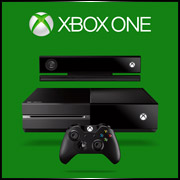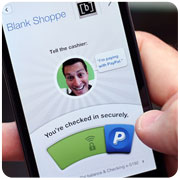
For the second time in the run-up to the Xbox One launch, Microsoft has made a complete reversal on one of its core requirements for the new console.
Specifically, whereas the company had indicated previously that the Kinect peripheral would have to be always-on during Xbox One play, it said this week that it will be possible to turn the Kinect peripheral off or disconnect it from the Xbox One.
“When we first announced Xbox One, we did intend for Kinect to be plugged in for the console to work,” said Microsoft spokesperson Brendan Daley. “As we’ve progressed in the development cycle, we’ve revised our approach so that the console will still function if Kinect isn’t plugged in.”
However, Xbox One is still designed to “work best with Kinect plugged in,” he added.
A Matter of Choice
Microsoft created Kinect as a controller for the Xbox 360 and sold it as a peripheral to work with compatible games and applications. The controller reacts to voice, gesture and natural sensing to interact with the system, including controlling the action in games as well as pressing “play” on a movie or other content.
Microsoft made a decision to include Kinect as a default component of the Xbox One. By having it as a part of the console, developers of video games and other forms of entertainment can design for the gesture-based controller.
Now, however, Microsoft will allow users to disable Kinect, though it will still come as part of the Xbox One console.
The ability to turn Kinect off puts the choice in the gamer’s lap.
“Ultimately we felt removing the requirement lets you decide when you want Kinect attached to your Xbox One and when you don’t,” Daley told the E-Commerce Times.
This is the second about-face Microsoft has made on the Xbox One. Originally the console was also to require an always-on Internet connection, but that decision got reversed just after E3 in June.
‘It Has to Listen’
The policy change is a reaction to criticism in the gamer community.
While it is unfortunate that Microsoft had to respond to consumer reaction on the Internet connection and the Kinect controller, its decision to appeal to consumers shows that the company listens to feedback.
“These features becoming options is happening because Microsoft is an experienced company that understands it has to listen to its customers,” video game analyst George Chronis, editor of DFC Dossier, told the E-Commerce Times. “This does not mean Microsoft has given up on its aspirations for tighter integration of its technology throughout the firm’s various business segments, but is an admission that a better job needs to be done in introducing consumers to these new features.”
Indeed, many gamers are accustomed to a game controller and prefer holding the controls over using gestures and voice commands.
“A lot of the hard-core customer base isn’t interested in gesture controls and UI innovations,” Lewis Ward, IDC’s research manager for gaming, told the E-Commerce Times. “These technologies at this point are an interesting value-add, but a standard old-fashioned controller is still what a lot of their customer base really wants to play with.”
Security Concerns
Whether or not security is a real issue associated with having Kinect always on in the living room, it is a real concern for many consumers. Kinect’s sensors, camera and microphone potentially open up the living room for eavesdropping, whether the console is on or off.
“Privacy concerns have become the hot issue for 2013,” Jesse Divnich, vice president of insights at EEDAR, told the E-Commerce Times. “Technology that is always on, especially when their input function is video and sound, is a global social concern among people.”
Recent revelations about the NSA’s PRISM surveillance program have elevated concern on many fronts.
“It is unfortunate that this has trickled into our industry, but it highlights a clear movement by citizens to decouple from technology that may have the perception of invading their privacy,” said Divnich.
The $100 Price Differentiator
Of course, another differentiating factor between the Xbox One and the competing Sony PlayStation 4 is that Microsoft’s product will be priced US$100 higher.
Many gamers have justified the price considering that it includes the Kinect, but now that the requirement has been dropped, some gamers are questioning its value.
Still, Xbox users tend to be a loyal bunch.
“A lot of consumers are heavily invested into their Xbox Live profiles as well as their friends list they’ve built up over the years,” Divnich explained. “I could foresee some gamers justifying the extra $100 price point, even if they don’t see the Kinect as having the same value, just to continue to be part of the Xbox Live community.”






















































Social Media
See all Social Media